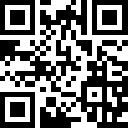自考英语(一)复习资料第七章(2)
本课主要语法:被动语态
英语动词有主动语态和被动语态两种,当主语是动作的发出者,动词用主动语态;当主语时动作的承受者,动词要用被动语态。只有及物动词才有被动语态。
1. 被动语态的构成:
被动语态由“be+过去分词”构成。
如:I clean the window.(主动)
The window is cleaned by me.(被动)
根据时态的不同,被动语态中的be动词可以有各种变化:
时态 主动句 被动句 be 的变化
一般现在时 He cleans the window. The window is cleaned by him. is
一般过去时 He cleaned the window. The window was cleaned by him. was
一般将来时 He will clean the window. The window will be cleaned by him. will be
现在进行时 He is cleaning the window. The window is being cleaned by him. is being
过去进行时 He was cleaning the window. The window was being cleaned by him. was being
现在完成时 He has cleaned the window. The window has been cleaned by him. has been
过去完成时 He had cleaned the window. The window had been cleaned by him. had been
将来完成时 He will have cleaned the window. The window will have been cleaned by him. will have been
进行时较少用被动语态。
2.一些特殊形式被动语态的构成:
1)不定式结构的被动语态,有以下几种情况:
a).表示喜欢、希望、想要及与其相似意义的动词+宾语+不定式,由不定式的被动式构成被动语态。如:He wants someone to take photographs. 他想找个人来照些相。(主动)
He wants photographs to be taken. 他想找个人来照些相。(被动)
b) 表示命令、请求、劝告、邀请的动词+间接宾语+不定式,可以用主要动词的被动式构成被动语态。如:He invited me to go.他邀请我去。(主动)
I was invited to go.我被邀请去。(被动)
但是,如果是advise/beg/order/recommend/urge+间接宾语+不定式+宾语的结构,则可以用两种被动语态。一种是如上述将主要动词变成被动语态。或者用“advise等动词+that…should+被动式” 构成被动语态
如:He urged the Council to reduce the rates.他敦请市议会减轻捐税。(主动)
The Council was urged to reduce the rates.市议会被敦请减轻捐税。(被动)
He urged that the rates should be reduced.他敦请市议会减轻捐税。(被动)
在句子中,动词后面直接是不定式作宾语,没有间接宾语,所以被动语态只有一种形式,即用that …should结构表示被动语态。
He decided to sell the house.他决定把房子卖了。(主动)
He decided that the house should be sold.他决定,房子必须得卖掉。(被动)
2)动名词结构的被动语态:
如是advise/insist/propose/recommend/suggest+动名词+宾语结构,通常用that…should结构表示被动语态。
如:He recommended using bullet-proof glass.他建议用防弹玻璃。(主动)
He recommended that bullet-proof glass should be used.他建议应该使用防弹玻璃。(被动)
其它动名词结构的被动语态由动名词的被动式来表示:
如: I remember them taking me to the Zoo.我记得他们曾经带我去过动物园。(主动)
I remember being taken to the Zoo.我记的被带到动物园去过。(被动)
3)含有情态动词的被动语态:
含有情态动词的被动语态的结构:情态动词+be+过去分词。
如:You must shut these doors.你必须把这些门关上。(主动)
These doors must be shut.这些门必须关上。(被动)
You should have told him.你本应该告诉他。(主动)
He should have been told.本应该告诉他才是。(被动)
4)带有直接宾语和间接宾语的句子,变为被动语态的时候,只把一个宾语变为主语,另外一个宾语保留在动词后面,这种句子可以有两个被动句。
如:His teacher gave him a book.他的老师给了他一本书。(主动)
A book was given to him by his teacher.(被动)
He was given a book by his teacher. (被动)
Someone gave her a dog.有人送给她一只狗。(主动)
A dog was given to her. (被动)
She was given a dog. (被动)
两种被动语态中,第二种形式比第一种形式更为常用,即应该把间接宾语变为被动语态的主语。
5)含有复合宾语的主动句变为被动句时,将宾语变为主语,宾补仍保留在动词之后,成为主补。
如:We call him Xiao Wang.我们叫他小王。(主动)
He was called Xiao Wang.他被叫小王。(被动)
We asked the teacher to explain the sentence again.我们要求老师把这个句子再解释一次。(主动)
The teacher was asked to explain the sentence again.老师被要求把这个句子再解释一次。(被动)
注:make, hear, watch, see, feel, let, have等动词在主动语态中,其后作宾补的不定式一般不带to,但当用于被动句时,后面作宾补的不定式必须带有to。
如:She saw a man go into the room.她看见一个男人走进屋里。(主动)
A man was seen to go into the room.一个男人被看到走进屋里去了。(被动)
His mother made him do his homework again.他妈妈让他把作业重写一次。(主动)
He was made to do his homework again by his mother.他被妈妈要求把作业重写一次。(被动)
6)动词短语的被动语态
动词+介词
如:They have talked about this matter recently.他们近来一直在谈论这件事情。(主动)
This matter has been talked about recently.这件事情近来一直被谈论着。(被动)
动词+副词
如:They put off the sports meeting.他们把运动会推迟了。(主动)
The sports meeting was put off.运动会被推迟了。(被动)
7)get+过去分词构成的被动语态
get+过去分词也可以构成被动语态,用这种结构的句子侧重于动作的结果而不是动作本身。
如:The man got hurt on his way home.那个男子在回家的路上受伤了。
Mary is going to get married.玛丽准备结婚。
3.被动语态的用法:
1)动作的施动者很明显,没有必要提到时:
如:The rubbish hasn’t been collected.垃圾没有清走。
Your hand will be X-rayed.你的手要照X片。
2)不知道、不确切知道或忘记了谁是施动者。
如:The minister was murdered.部长被谋杀了。
You will be met at the station.有人会到车站去接你。
3)使用被动语态可以避免说出别扭的句子。
如:When he arrived home a detective arrested him.他回到家时,一名侦探逮捕了他。(主动)
此句最好表示为:
When he arrived home he was arrested by a detective.他回到家里就被一名侦探逮捕了。(被动)变为被动后,可以避免改换主语。
4) 主动句中主语是不定代词one,通常可以表示为被动语态。
如:One sees this sort of advertisement everywhere.这样的广告到处可见。(主动)
This sort of advertisement is seen everywhere. 这样的广告到处可见。(被动)
5)当动作的实施者即主动句中的主语是泛指人们时:这样的动词有:assume, believe, claim, consider, estimate, find, know, report, say, think等,通常可以表示为被动语态。
如:People believe him to be honest.人们相信他是诚实的。
He is believed to be honest.相信他是诚实的。
6)新闻报道,书刊介绍等文体中,突出描述的客观性。
如:Three people have so far been killed in the storms sweeping across the north of England and Southern Scotland.在席卷英格兰北部和苏格兰南部的暴风雨中,三人丧生。
4.被动语态与系表结构的区别:
英语中有些“be+过去分词”的形式可以表示被动语态也可以作系表结构。如果表示一个动作,则是被动语态;如果表示状态,则是系表结构。表示被动时,常伴有by短语;表示状态时多用其他介词短语(in, at, with等)
如:The novel is well written.这个小说写得很好。(系表结构)
The novel is written by a woman.这个小说是一位妇女写的。(被动)
The man was offended. 那个人很生气。(系表结构)
The man was offended by the woman.那个男人被那个女人激怒了。(被动)
5.主动形式表被动含义:
当句子中出现easy , hard , difficult 等词修饰时,我们用主动形式表达被动
如 I found the poem hard to understand .
2001年第25小题:
They found the lecture hard --------
A to be understood B to understand C for understanding D to have been understood
答案是B
第二部分:巩固练习
把下列句子变为被动句:
1.He suggested using the waterproof material.
He suggested that the waterproof material should be used.
2. He advised us to go to school earlier.
We are advised to go to school earlier.
3.The waiter recommended us to order the seafood.
We were recommended to order the seafood.
The waiter recommended that the seafood should be ordered.
4.We often hear him sing in the next room.
He is often heard to sing in the next room.
5.You needn’t return the book now.
The book needn’t be returned now.
6. They will send you a bill at the end of the month.
You will be sent a bill at the end of the month.
A bill will be sent to you at the end of the month.
更多自考英语信息请关注:
2008年高等教育自学考试英语网上辅导方案
环球网校自考英语频道
百度自考英语
最新资讯
- 考前必背!自学考试《中国近现代史纲要》论述题高频考点2024-10-19
- 自考报考策略:科学搭配科目,加速毕业进程2024-07-20
- 2025年考研考生五一假期,英语科目应该如何复习?2024-05-03
- 备考指南!2024年4月自学考试考前要做哪些准备?2024-03-31
- 考前备考冲刺!自考如何一次就过?2024-03-30
- 考点汇总:《中国近现代史纲要》论述题2024-03-25
- 备考资料:《中国近现代史纲要》简答题考点汇总2024-03-25
- 自考可以从哪些维度进行备考?2024-02-17
- @自考生,这里有备考技巧2024-02-17
- 自学考试备考复习方法!建议收藏2024-02-16
 打卡人数
打卡人数


